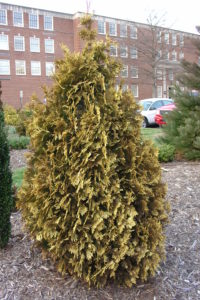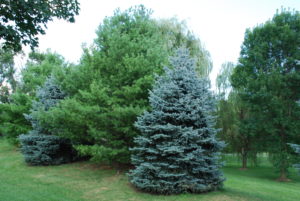For those who live in northern regions where winters are cold and snowy (USDA hardiness zones 3-6), many (not all) gardeners can still plant many kinds of trees, shrubs and perennials in late fall and winter if the ground is not frozen. Deciduous plants are in their natural period of rest or dormancy. This does not include evergreen trees and shrubs.
Deciduous vs Evergreens
Fall planting of deciduous trees works better because their need for water is a lot less in winter. Evergreens retain their leaves/needles all winter. Leaf metabolism is a lot less than in summer. Once the ground freezes, roots have trouble foraging for water, and by late winter, leaves/needles may become scorched along the edges, turn brown or die. Fall planting can be more difficult for broad-leaved evergreens like rhododendrons or hollies (Ilex). Mulch around evergreens before the ground freezes to trap in soil warmth and stimulate root growth.
Soil -Water Availability
Across the U.S., winter weather is very different. In the upper Midwest, the fall season is short, and winter is usually long and frigidly cold. The ground freezes early and stays through early spring in most years. Here, spring planting is more reliable with plentiful rainfall.
Along the Pacific coast (Washington, Oregon, and California), fall-winter planting makes sense. Summers are hot and very dry. Fall and winter are long cool periods with lots of rainfall that is ideal for root growth. The ground rarely freezes along the coastal areas.
Plant availability is a significant concern. Generally, garden centers and nurseries do not holdover huge inventories of trees and shrubs. Finally, in regions where winters are cold, magnolia, dogwood, tulip tree, sweet gum, red maple, birch, hawthorn, tulip poplars, cherries, plum and many oak species are more susceptible to winter injury (Purdue University study).



 Posted in
Posted in 
